
The many shades of red. Freshly cut padauk can range a lot in color. The board at the left exhibits a more subdued red hue reminiscent of bubinga, while those to the right are more in the orange-red spectrum.
There’s redwood, which grows in California, and then there’s RED wood. If it’s the color you’re after, definitely consider padauk. Much of this imported lumber has such a bright red/orange hue that it is commonly called vermillion. Although the spectacular color does darken and lose some of its vibrancy over time, padauk is a lovely wood that’s reasonably pleasant to work.
Where the wood comes from
While as many as seven species yield lumber marketed as padauk worldwide, the wood we see in the US is almost all African padauk (Pterocarpus soyauxi). It comes from the tropical forests of central and western Africa. Size-wise, the trees are similar to many mature hardwoods in the eastern U.S., growing 100' or so tall and 2-4' in in diameter with wide, spreading crowns similar to those of elms. The trees are not designated on either the CITES list or the IUCN Red List as being endangered, and their harvest offers economic opportunity to their home countries.
History in woodworking
هذه القصة مأخوذة من طبعة February - March 2021 من Woodcraft Magazine.
ابدأ النسخة التجريبية المجانية من Magzter GOLD لمدة 7 أيام للوصول إلى آلاف القصص المتميزة المنسقة وأكثر من 9,000 مجلة وصحيفة.
بالفعل مشترك ? تسجيل الدخول
هذه القصة مأخوذة من طبعة February - March 2021 من Woodcraft Magazine.
ابدأ النسخة التجريبية المجانية من Magzter GOLD لمدة 7 أيام للوصول إلى آلاف القصص المتميزة المنسقة وأكثر من 9,000 مجلة وصحيفة.
بالفعل مشترك? تسجيل الدخول
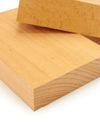
Beech
Plain looks, but a solid performer
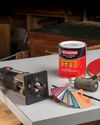
Working with PLASTIC LAMINATE
Adding a durable, smooth, and colorful surface to your work
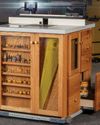
High-Tech ROUTER TABLE
A state-of-the-art shop essential

Albers-Inspired NESTING TABLES
A colorful array of Bauhaus utility

Desktop ORGANIZERS
Mini modules for your modern workspace
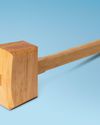
Joiner's MALLET
A hard-hitting shop hammer

Battery-backed biscuiting
DeWalt 20V Max XR Biscuit Joiner
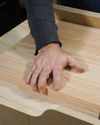
Crosscut SLED
A basic build of a crucial table saw accessory
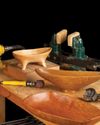
Power-carving BOWLS
Tools and techniques for sculpting

Library STEPS
Mitered box joints give rise to an updated classic